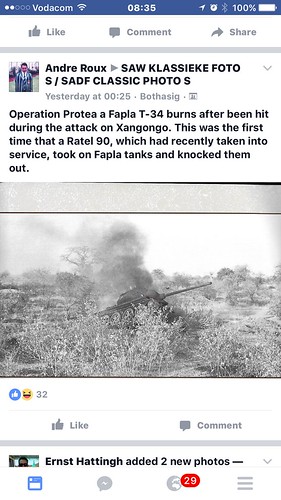Net photosynthetic charge (Pn), stomatal conductance, intercellular CO2 concentration, and transpiration speed of the 2nd wheat leaves have been measured at , 24, and 48 h of drought treatment by employing a transportable fuel analysis method (LI-COR 6400), with a light-weight-emitting diode mild source (LI-COR Inc., Lincoln, NE). At least 5 replicates for every therapy were calculated. Proteins of the leaf and the root samples have been geared  up according to the beforehand described protocol [twenty five], with slight modifications. Frozen leaves and roots (.5 g) were ground to a wonderful powder with pre-chilled mortar and pestle in liquid nitrogen. The powder was blended in a cuvette with 10 ml cold acetone, containing ten% (g/ml) TCA and .07% (v/v) -mercaptoethanol, to precipitate proteins overnight at -20. Precipitated proteins ended up centrifuged at 19,000 g for 1 h at 4 and ended up washed thrice with ice-cold acetone that contains .07% (v/v) -mercaptoethanol. To eradicate acetone, the gathered protein pellets have been dried with liquid nitrogen (N2). The dried powder was completely re-suspended in 1 ml of lysis buffer [7 M urea, two M thiourea, 4% (g/ml) CHAPS, 65 mM DTT, and .01% (v/v) protein inhibitor]. The suspension was incubated at four for one.five h and then centrifuged at 19,000 g for 1h at 4 to take away any insoluble materials. The supernatant containing soluble proteins was quantified by a two-D Quant Kit (GE Health care Daily life Sciences) utilizing bovine serum DMXAA albumin (BSA 1mg/ml) as a normal.
up according to the beforehand described protocol [twenty five], with slight modifications. Frozen leaves and roots (.5 g) were ground to a wonderful powder with pre-chilled mortar and pestle in liquid nitrogen. The powder was blended in a cuvette with 10 ml cold acetone, containing ten% (g/ml) TCA and .07% (v/v) -mercaptoethanol, to precipitate proteins overnight at -20. Precipitated proteins ended up centrifuged at 19,000 g for 1 h at 4 and ended up washed thrice with ice-cold acetone that contains .07% (v/v) -mercaptoethanol. To eradicate acetone, the gathered protein pellets have been dried with liquid nitrogen (N2). The dried powder was completely re-suspended in 1 ml of lysis buffer [7 M urea, two M thiourea, 4% (g/ml) CHAPS, 65 mM DTT, and .01% (v/v) protein inhibitor]. The suspension was incubated at four for one.five h and then centrifuged at 19,000 g for 1h at 4 to take away any insoluble materials. The supernatant containing soluble proteins was quantified by a two-D Quant Kit (GE Health care Daily life Sciences) utilizing bovine serum DMXAA albumin (BSA 1mg/ml) as a normal.
two-DE was performed according to the modified approach of O’Farrell [26]. The immobilized pH gradient (IPG) strips of pH 4 to 7 (seventeen cm, linear, Bio-Rad Laboratories), which was confirmed to be optimal for separation of the well prepared proteins by our lab (information not demonstrated), had been utilized for isoelectric concentrating (IEF), and the 2nd dimension SDS-Webpage was employed with twelve% and eleven.25% gels for the leaf and root tissues, respectively. For the very first dimension electrophoresis, 350 l IEF rehydration buffer [7 M urea, 2 M thiourea, four% (g/ml) CHAPS, 65 mM DTT, .2% (g/ml) bio-lyte, and .01% (g/ml) bromophenol blue] made up of 600 g (leaf) or 250 g (root) protein was loaded onto the IPG strips and actively rehydrated for fourteen h at 50 V and twenty. IEF was carried out on the PROTAIN IEF Cell system (Bio-Rad, United states of america) by applying a voltage of 200 V for 1 h, 500 V for one h, a thousand V for one h, and ten,000 V for longer than 5 h. A voltage of ten,000 V was preserved till a whole of eighty kVh was arrived at. Soon after IEF, the strips ended up equilibrated in ten ml of decreasing equilibration buffer [six M urea, 1.5 M Tris-HCl (pH eight.eight), 20% (v/v) glycerol, two% (g/ml) SDS, a trace of bromophenol blue, and two% (g/ml) dithiothreitol (DTT)] for 15 min, and then in an equilibration buffer containing two.five% (g/ml) iodoacetamide for an additional 15 min. The second dimension SDS-Page was carried out employing the PROTEAN II xi Cell technique (Bio-RadUSA) at 14 and five mA/gel for 45 min and then in twenty mA/gel right up until the bromophenol blue arrived at the end of the gel. Protein ladders ended up also loaded onto the gels. Protein places in 2-DE gels for leaf samples had been detected by staining with Coomassie Brilliant Blue (CBB) G-250 [27], and de-staining with double-distilled H2O. Protein spots in two-DE gels for root samples were detected by silver staining according to the technique of Mireille Chevallet [28]. 3 organic repeats ended up carried out for every sample. Each gel was scanned by UMAX PowerLook 2100XL image scanner (UMAX Techniques GmbH, Willich, Germany) at three hundred dpi (dot for each inches) resolution. Image investigation was executed by employing PDQuest 8..one application (Bio-Rad Laboratories, Hercules, CA). After automated detection, matching, and normalization, even more enhancing was preformed manually to prevent the prevalence of discrepancy during location choice. A few impartial biological replicates were utilised to produce “replicate groups”.
